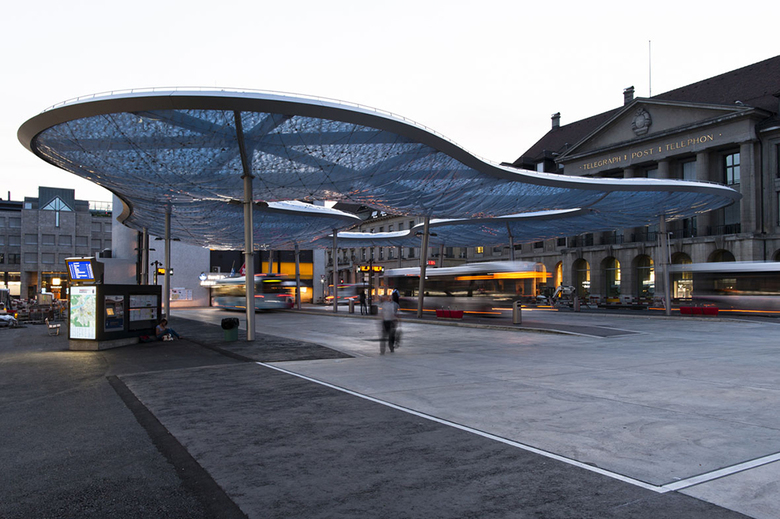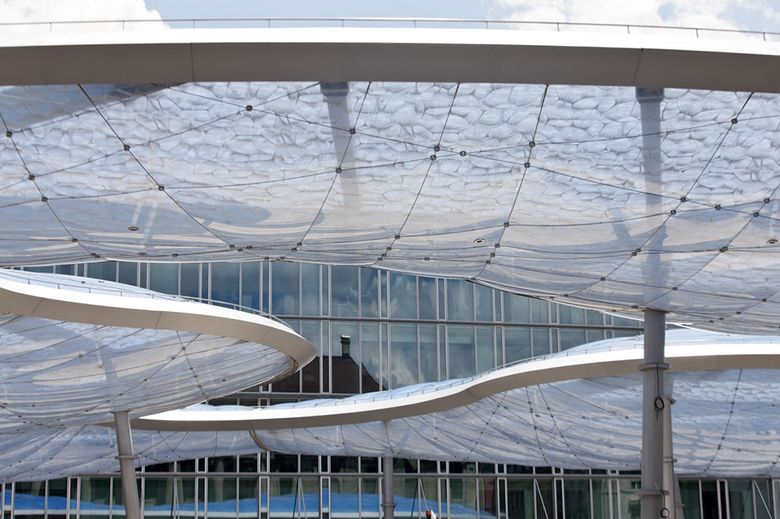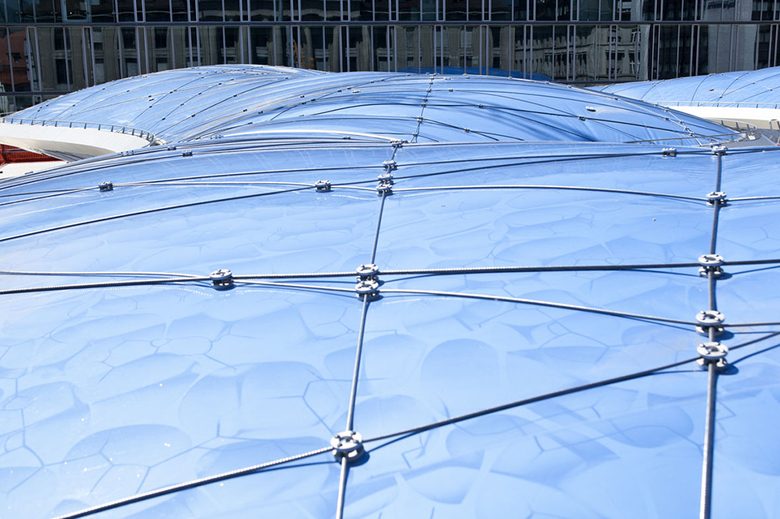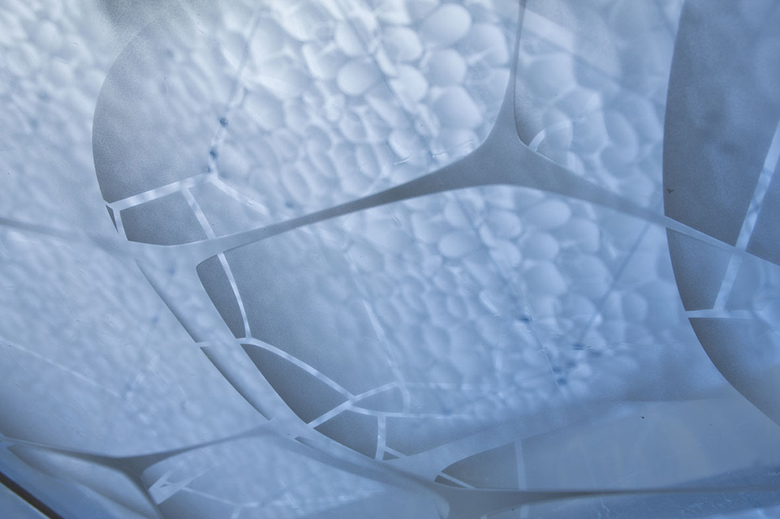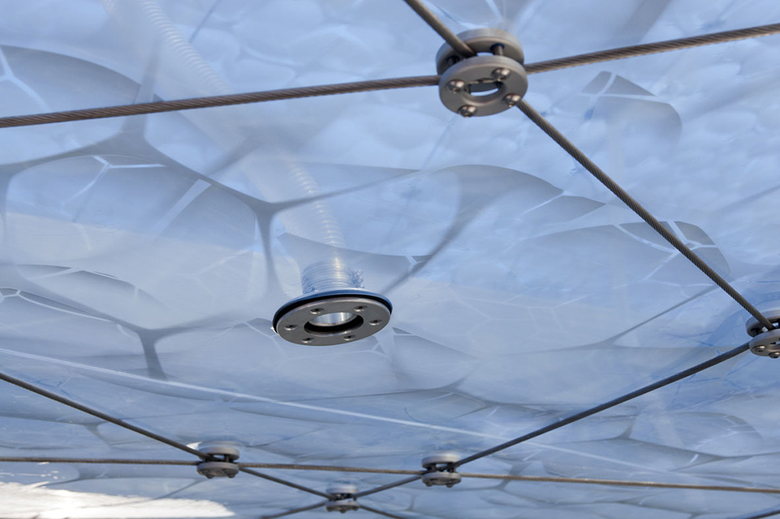Building a "Cloud" in Aarau
Situated between the busy Bahnhofstrasse and the new railway station in the center of Aarau, Switzerland, is a cushioned canopy that seems to float like a cloud. Designed by Vehovar & Jauslin Architektur, the bus terminal's ETFE membrane creates a striking entry to the region.
Architect Mateja Vehovar describes how they wanted to make a "generous, open and urban station square [that] should represent a pleasant and bright space for everybody." Further, he says: "The roof is in a constructive dialogue with the new station building of glass [designed by Theo Hotz, at right in above photo], and complements it atmospherically."
To help realize the bus terminal, whose design met with overwhelming public approval in a 2009 referendum, the architects worked with a number of consultants and manufacturers: formTL for the structural design; suisseplan Ingenieure AG for the planning and construction management; and Ruch AG as the steel contractor. Realizing the two-layer ETFE (Ethylene Tetra Flouro Ethylene) foil required a small team in and of itself: Paolo Monaco (with architect Stefan Jauslin) on the design of the foil print; Vector Foiltec for the construction of the ETFE foil; and von Reisewitz for printing the foil.
The ETFE membrane is lifted on a color-coated steel structure and is made up of top and bottom layers filled with air and held in place by stainless steel spiral cables with nodes of anodized aluminum. The undulating form covers an area of 1,070 square meters (11,515 square feet) while containing 1,810 cubic meters (63,920 cubic feet) of air, making the bus terminal the largest single-chamber membrane air cushion in the world.
To achieve the distinctive color of the canopy, the translucent membranes are clear on the bottom and dyed blue on the top. But it's the print by Monaco and Jauslin that creates the most character, giving the skin a bubble-like appearance that changes depending on one's position as well as that of the sun. In some instances, as in the photo below, the two membranes and the various structural pieces flatten into striking patterns that could not have been anticipated by the architects or the rest of the team.
ETFE may seem to be the most important material in the construction of the canopy, but let's not forget about the air that sits between the layers. Even with an airtight membrane on all sides, the air is not static; it is constantly moving. According to formTL:
In other words, the cheapest and most readily available material available – air – is one of the most complex to design and build with.

